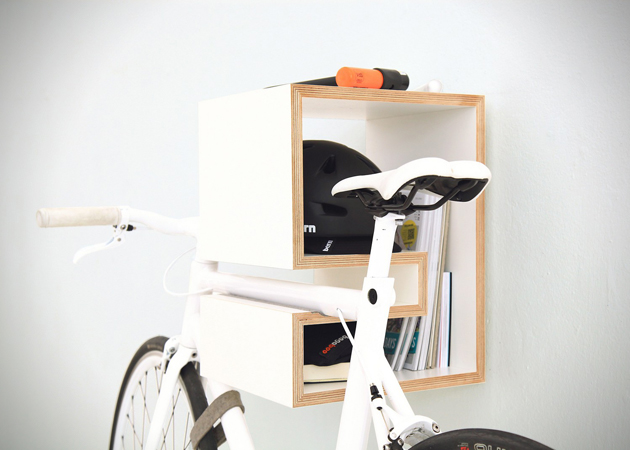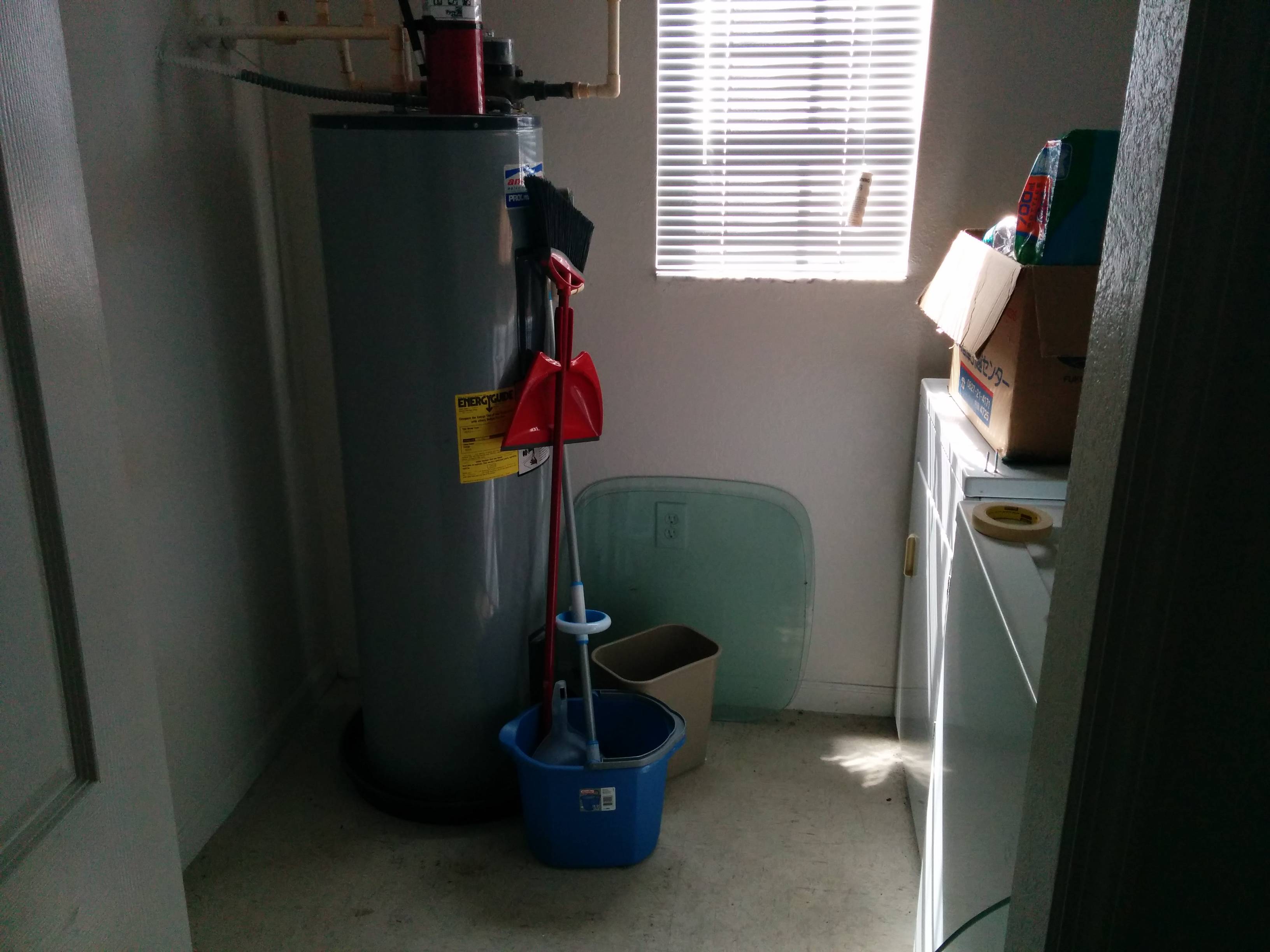To answer the Kvartal question: no, but in practice if you don't have studs it will be fragile and over time you're likely to pull the screws loose or right out of the wall. If the rack doesn't match up with your studs use a backing board attached to studs and you'll be fine - even a length of 1x4" timber would probably be enough. Don't use any of the processed woods (particle board, chipboard, MDF) as they're not strong enough.
The easy option is a stand that leans on the wall, since that doesn't require any holes in the wall at all. The disadvantage is that they tend to move around and mark the wall unless you anchor them in place. But that anchor can be quite weak, a drywall anchor will be fine. I haven't seen one designed to hold the bike vertically, but I suspect you could buy one that would be easy enough to modify one to hold the handlebars rather than the top tube (the one shown it looks as though you could bend the bars in so the hooks are closer together).

As WTHarper says, if you can find studs but they're not in the right place, the better approach is to attach a solid bit of lumber across the wall, screwed to the studs, then attach the bike rack to that. If the wall is painted I'm am not a fan of the screw-in hooks, inevitably the bike ends up pressing on the wall and marking it. Better to buy a proper suspended rack and hang the bike on that. Or make your own, add a second cross piece lower down to brace on and a couple of timber triangles will work fine.
There are a heap of very pretty DIY solutions here, you could do this one with a couple of bits of 2x4" at each end if you don't want to spend the time on shelves:

Since you want a vertical stand something like this might work, and could even be arranged so the saddle doesn't (quite) touch the wall. That would make it less likely that you'd mark the wall. (As Daniel says, this is the same idea as the Kvartal holder you're asking about)

If you're lucky this will fit on the short wall behind the door, otherwise it'll block off half the room. Note that I'm suggesting wheels-out so the dirty parts are in the middle of the room. You might prefer to mark the wall rather than have wet, dirty wheels in the middle of the room.
IME drywall screws will not work, drywall just isn't structural. The electrical panel right there also gives me pause, even hooking a cable with a drywall screw could be bad (either by pulling the sharp edge of the screw through the insulation, or just pinching the cable and starting a fire). But mostly, to work well enough to hold even a light bicycle you'd need to carefully arrange them to get the forces right, otherwise you're going to tear the hole or rip one out of the wall. Screwing a board to the studs, then the rack to the board is a better solution.
One last question: does it fit in this way round? I assume you've tried, but if that works it's the least effort option. You might want to tape a bit of card to the wall where the front tyre hits and by the rear axle (and rear tyre) if it does work.

Edit: Another Option:
Would this fit on the wall beside the door? If so, then if there is no stud where it needs to be mounted, place a length of wood between the door and corner, screw that into the wall studs and mount the hook anywhere you like.












 Use two on each bracket, make sure to drill the holes cleanly, and don't over tighten or you will crush the drywall between the bracket and toggle. This would be the cleanest and quickest way to do this, but for heavier bikes you risk pulling a huge chunk of drywall out so I'd recommend method two... (I'd especially avoid using any sort of hollow wall anchors to suspend anything from a ceiling.) ((Also, given the proximity to your breaker panel, I'd avoid drilling large holes willy-nilly unless you're sure the wiring is out of the way. Method two shouldn't cause a problem.))
Use two on each bracket, make sure to drill the holes cleanly, and don't over tighten or you will crush the drywall between the bracket and toggle. This would be the cleanest and quickest way to do this, but for heavier bikes you risk pulling a huge chunk of drywall out so I'd recommend method two... (I'd especially avoid using any sort of hollow wall anchors to suspend anything from a ceiling.) ((Also, given the proximity to your breaker panel, I'd avoid drilling large holes willy-nilly unless you're sure the wiring is out of the way. Method two shouldn't cause a problem.))